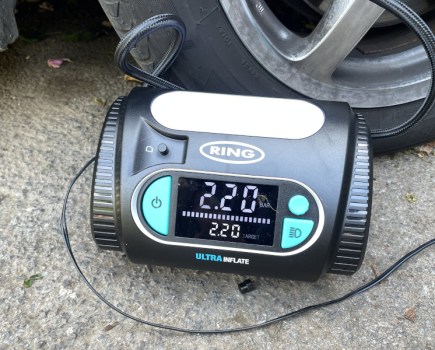In fact, classic airtime has never been better. After toes were dipped in the ’Nineties with programmes like ‘The Car’s The Star’ and the late John Peel’s excellent ‘Classic British Cars’ series, ‘Wheeler Dealers’ set the pattern from 2003 onwards for the format we’re familiar with today of buy a car, restore it and sell it on. Then there are or were the many long-running, in-period productions such as ‘Poirot’, ‘Heartbeat’, ‘Foyle’s War’, ‘Inspector George Gently’ and, more recently, ‘Endeavour’, none of which could have been made without a plentiful supply of classics on hand.
Turning to the resto shows, ‘Classic Car Rescue’ jars with many, particularly restoration professionals, because of the essential things being glossed over – for example, why labour costs go unaccounted for when the tolerant workforce toil into the night to get the job done – or apparently contrived, such as finding just the right E-type spares in a skip. Then there are the unrealistic timescales imposed to work miracles. To those new to the classic car scene it can give a false impression of how the restoration industry works and what it really takes, financially and time-wise, to do a proper job; not forgetting too that parts suppliers have a living to earn like everyone else, and are not just soft touches to be beaten down hundreds of pounds by smooth-talkers. Those of us still watching do so less for the reality element than expectations of Bernie’s next rant, as an impulsively-bought car falls apart on the hoist. As such, ‘CCR’ is more of a soap opera, though still instructive by default when showing us the rot spots to heed. The state of that Mercedes-Benz R107 bulkhead in April 28’s programme, for instance, was a sobering experience for anybody. But as for that Mario, he’d never heard of a Zephyr Zodiac when he was shown one…
As the veteran of the genre, ‘Wheeler Dealers’ on Discovery retains what ‘Classic Car Rescue’ lacks – credibility. Aimed at ‘D-I-Yers’, it’s been around the longest, gives useful tips, is mindful of workshop safety and explains how things work, while presenters Mike Brewer and Edd China enhance this credibility with their annual hands-on spot at the NEC Classic Motor Show. The busy background music, occasionally shouty voice-overs and slightly rehearsed air to the dialogue may not represent absolute perfection, but viewer feedback is generally positive and versions of the programme have aired recently on Swedish and US TV.
A relative newcomer to the mix, National Geographic’s ‘Car SOS’ shows there are other refreshing ways of presenting a familiar theme. Any badinage between Tim Shaw and Fuzz Townshend is good-natured and natural-sounding. Fuzz is a fortunate choice, and not just for his buccaneer headgear. His liking for classics going back to the year dot, such as an Austin 12 tourer, makes a pleasant change from the usual hyperbole lavished on sporting exotica. The feel-good factor of restoring cars in secret for ‘needy’ owners goes down well too. “We love classic cars, that’s all that matters”, say Tim and Fuzz, and it shows. Pity ‘Car SOS’ is confined to a channel many of us can’t obtain…
This leaves Channel 4’s ‘brand-new’ (as announcers like to call everything nowadays) ‘For the Love of Cars’ presented by Phil Glenister, which is different again in character. First impressions are good. It recalls the flavour of John Peel’s 1999 ‘Classic British Cars’ where owner involvement and enjoyable historical footage is concerned, but bolted on to a restoration element and lots of outdoor action. Phil Glenister’s dry irreverence sorts well with restorer Ant Anstead’s pleasantly informative and relaxed style. The programme’s serious and mature when it needs to be, explains facts without being boring, and is realistic about restoration timescales (for example, devoting six weeks to fettling and preparing a Land Rover’s body panels and chassis before painting).
As for classic exposure in period TV dramas, we certainly can’t complain. It’s just the factual accuracy that’s questionable. Many of us have just enjoyed seeing the lovely black MkI 2.4 Jaguar in ‘Endeavour’. But would a Wolseley 4/44 still have been on the strength of Oxford police as late as 1966? Less acceptable was the appearance of a Routemaster bus, Series III Oxford and a post-1957 Anglia 100E in ‘The Bletchley Circle’ episodes set in 1952/1953, which compounded the felony by showing a press photo of a wrecked MkII Consul. Also disappointing was the last ‘Foyle’s War’ series, now progressed to 1945/1946, showing an Austin 8 and MkI Hillman Minx with re-issued and reversed (i.e. three numbers followed by three letters) registrations – a format which even in its original guise wouldn’t have appeared until 1953. But authentic or not, the appearance of classics has always been good for ratings. “I watch it for the cars”, people used to say to me about ‘Heartbeat’, most of whom were not classic owners.
Time will also tell how successful the latest classic car programme to appear will perform. ‘Cars That Rock’, presented by AC/DC frontman Brian Johnson, is a six-part series airing on Freeview channel Quest, with the second episode hitting screens tomorrow (Thursday, May 8) at 9pm.
Where reality TV is concerned, today’s proliferation of classic car programmes can only be to the good in promoting awareness of our movement, as long as they convey the right kind of message – that it’s a responsible hobby and accurately reflects the skills and enjoyment of those involved, rather than a stage-managed display of distorted facts. The programmes reflecting this integrity are the ones that get our vote.
WHAT DO YOU THINK?
Do today’s classic car TV programmes present our hobby in the best light, or is it a case of ‘seen one, seen the lot’? Whatever your views, drop us a comment below.




